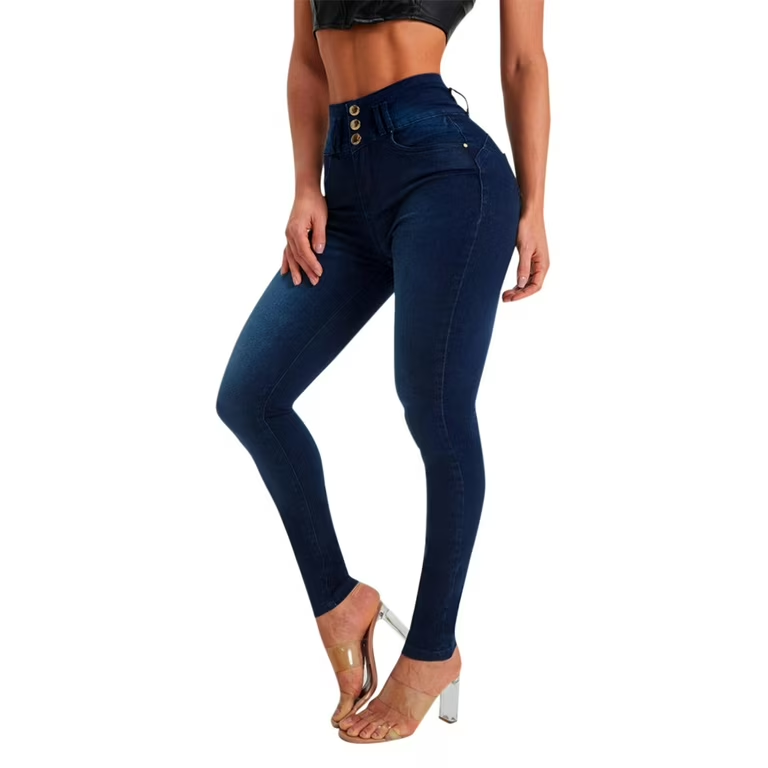
The Controversial World of 000 Jeans
The fashion industry is constantly evolving, pushing boundaries and setting new trends. One particularly controversial trend that has sparked heated debates is the emergence of 000 jeans. These ultra-slim jeans are designed to fit women with incredibly tiny waists, raising concerns about body image, health, and the overall message sent to consumers.
The Rise of 000 Jeans
In recent years, there has been a growing demand for increasingly smaller clothing sizes. This trend has led to the creation of 000 jeans, a size that caters to women with extremely narrow waists. While some fashionistas and celebrities proudly flaunt their ability to fit into these jeans, many critics argue that they promote unrealistic body standards and can be harmful to women’s self-esteem.
The Health Implications
Wearing clothes that are too small can have negative consequences for physical health. 000 jeans, in particular, can restrict breathing, digestion, and circulation. Additionally, the constant pressure on the body can lead to discomfort, pain, and even long-term health issues. Experts warn that the pursuit of such extreme body shapes can create a dangerous cycle of disordered eating and body dysmorphia.

The Impact on Body Image
The fashion industry has a significant influence on body image perceptions. By promoting 000 jeans as the ideal body type, it reinforces unrealistic beauty standards. This can lead to feelings of inadequacy and low self-esteem among women who cannot fit into these clothes. It is crucial to challenge these narrow beauty ideals and promote body positivity and acceptance.
The Role of the Fashion Industry
The fashion industry has a responsibility to create clothing that is both stylish and healthy. While it is important to offer a variety of sizes, it is equally important to avoid promoting extreme body shapes. Fashion brands should prioritize inclusivity and diversity, rather than focusing solely on catering to the smallest possible clientele.
Consumer Awareness and Choice
Consumers play a vital role in shaping the fashion industry. By making informed choices and supporting brands that promote body positivity, individuals can contribute to a healthier and more inclusive fashion landscape. It is essential to remember that beauty comes in all shapes and sizes, and that true confidence is found in embracing one’s unique body.

Alternatives to 000 Jeans
Fortunately, there are many fashion-forward alternatives to 000 jeans. Many designers and brands are now focusing on creating clothing that is both stylish and comfortable, catering to a wider range of body types. From high-waisted jeans to wide-leg pants, there are countless options available for women to look and feel their best without compromising their health.
Environmental impact of denim production
Denim, the fabric that has clothed generations, is undergoing a critical examination. Its iconic blue hue and durability have made it a wardrobe staple, but the process of creating denim leaves a significant environmental footprint. From cotton cultivation to the finishing processes, the denim industry is a major contributor to water pollution, greenhouse gas emissions, and chemical waste.
Cotton Cultivation: A Thirsty Crop
The foundation of denim is cotton, a crop with a notoriously high water consumption. Growing cotton requires vast amounts of water for irrigation, especially in regions facing water scarcity. Additionally, the cultivation process often involves the use of harmful pesticides and fertilizers, which contaminate soil and water bodies. Deforestation to create more cotton fields exacerbates the problem, contributing to climate change and biodiversity loss.
Energy-Intensive Production
Denim production is an energy-intensive process. From the cultivation of cotton to the manufacturing of fabric, dyeing, and finishing, each stage requires significant energy input. The majority of this energy comes from fossil fuels, further increasing greenhouse gas emissions. The transportation of raw materials and finished products across the globe also contributes to this carbon footprint.
Water Pollution: A Denim-Dyed Crisis
The dyeing process is arguably the most polluting stage in denim production. Indigo dye, the iconic blue color of denim, is particularly problematic. Traditional dyeing methods use large quantities of water and harmful chemicals, resulting in significant water pollution. The wastewater from denim factories often contains toxic substances that contaminate rivers and harm aquatic life.
Moreover, the finishing processes, such as stonewashing and acid washing, involve the use of chemicals and abrasives that generate hazardous waste. This waste often ends up in landfills or is improperly disposed of, posing a risk to human health and the environment.
The Role of Fast Fashion
The fast fashion industry, with its emphasis on low prices and rapid turnover, has intensified the environmental impact of denim production. Consumers are encouraged to purchase new jeans frequently, leading to increased demand for cotton and a higher volume of waste. The short lifespan of fast fashion denim exacerbates the issue, as these jeans often end up in landfills after a few wears.
Towards Sustainable Denim
Recognizing the environmental challenges, the denim industry is gradually shifting towards more sustainable practices. Several initiatives are underway to reduce the impact of denim production:
- Organic Cotton: Growing organic cotton reduces the use of harmful pesticides and fertilizers, benefiting both the environment and the health of farmers.
- Water-Efficient Dyeing Techniques: Innovative dyeing processes are being developed to reduce water consumption and minimize chemical usage.
- Recycling Denim: Recycling old jeans into new fabric can conserve resources and reduce waste.
- Consumer Awareness: Educating consumers about the environmental impact of denim and encouraging responsible consumption can drive positive change.
While these efforts are promising, there is still much work to be done. The denim industry needs to prioritize sustainability throughout the entire supply chain, from cotton cultivation to the end-of-life of the product. Consumers also have a role to play by choosing sustainable denim brands and extending the lifespan of their jeans.
Additional Considerations
To further strengthen the article, consider incorporating the following elements:
- Interviews with experts: Seek insights from fashion designers, body image experts, and psychologists to provide diverse perspectives on the issue.
- Case studies: Share stories of individuals who have struggled with body image issues related to 000 jeans to illustrate the impact of these trends.
- Visual aids: Include images of different body types and fashion options to enhance the article’s visual appeal and understanding.
- Call to action: Encourage readers to take steps towards body positivity and support brands that promote inclusivity.
By addressing these additional points, you can create a more comprehensive and impactful article that effectively raises awareness about the harmful effects of 000 jeans and promotes a positive body image message.

The debate surrounding 000 jeans is a complex one, with implications for both the fashion industry and consumers. While it is essential to celebrate diversity and individuality, it is equally important to promote healthy body image and well-being. By working together, the fashion industry, consumers, and body positivity advocates can create a more inclusive and empowering fashion landscape for all.
